Have you ever thought about taking pictures underwater? Underwater photography shows us a hidden world, filled with colorful fish and beautiful coral reefs. But just having a camera isn’t enough. You need the right tools and a positive, patient attitude to take great pictures underwater. Being open-minded and willing to adapt to changing conditions can also make a huge difference in capturing stunning shots.
If you want to explore underwater photography, this guide provides essential tips and techniques that can help with everything from choosing the right equipment to improving your images.
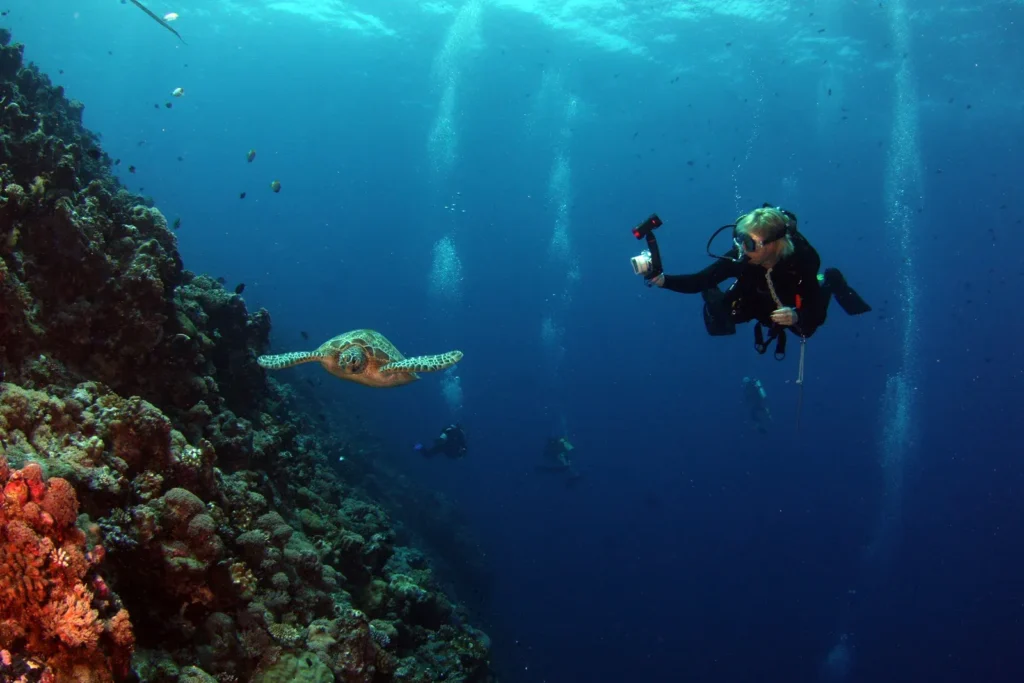
Fundamental Tools: Underwater Photography
Like with each business venture, appropriate fundamentals are at the core of every photographer’s desired results. Basic equipment and tools will not automatically lead to amazing photos. Here is what guides each photographer to start:
1. Underwater Lens and Protective Casing
Equipment without a protective casing is dangerous and should not be used when you enter the sea.
First on the agenda is a camera that will withstand Bicycle Motocross temperature-controlled conditions, meet the pulse of even the calmest sea hermit, and will not drop off sensitive peripherals like a DSLR or mirrorless camera. For every compact camera, there are always more sophisticated cousins who love to perform underwater.
Each piece of equipment comes fine-sealed in cases, but there always exists an obligatory waterproof housing that possesses a positive rating, guaranteed performance, and squad seals. Also, the depth seems to draw interest downwards, allowing harnessing of pressures with varied degrees, thus the need to abide by depth restrictions and limit checks for the underwater regions that you inhabit.
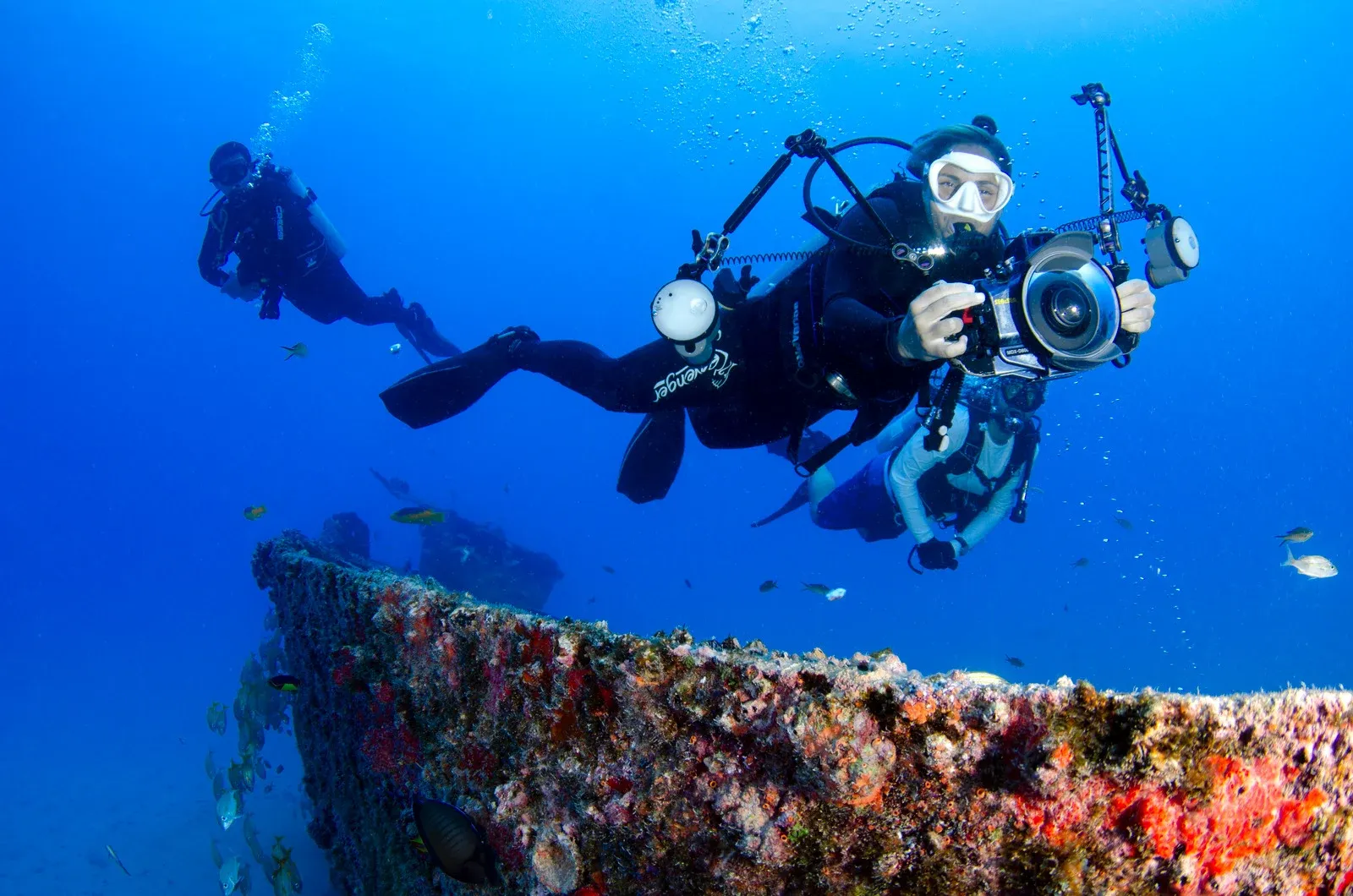
2. Underwater Photographic Lenses Required
Both wide-angle and macro lenses are required for underwater photography.
- Wide-angle lenses are ideal for photographing bigger-than-life coral reefs and massive sea creatures, such as sharks and schools of fish.
- Macro lenses allow you to zoom into even the tiniest of creatures, such as seahorses and nudibranchs, showcasing their intricate details.
3. Underwater Lighting Equipment
Light behaves differently underwater. The deeper you go, warm colors like red, orange, and yellow fade quickly, becoming dull and hazy. Subjects are better illuminated externally with strobes and video lights, which helps bring back the color and depth that enhances the images.
4. Underwater Photography Accessories
- The type of inserts you need to prevent fogging typically depends on the specific housing or equipment you’re using. For example, if you’re dealing with goggles, scuba masks, or camera housings, look for anti-fog inserts or moisture-absorbing packets designed for those specific items. These inserts often contain silica gel or other materials that absorb moisture and reduce condensation. Always choose inserts that are suitable for your particular application to ensure optimal clarity and performance.
- Visibility aids navigation during shooting and ensures safety.
- Long dives require extra batteries and memory cards. Long hours underwater can deplete your camera’s battery life faster than expected. Having spare batteries ensures you won’t miss capturing any incredible moments. Additionally, extra memory cards are crucial since prolonged dives often lead to taking numerous photos or videos.
Diving Skills That Are Important
Even underwater, the best photographers are unable to capture images without proper scuba skills. Mastering buoyancy control is a crucial factor – not only for stable footage but to protect the delicate ocean creatures.
Stable Shot with Buoyancy Control
Good buoyancy skills allow a person to rise and stay above a sandy seabed without stirring sediment or coral. All of these will guarantee a clean shot with the camera while reducing damage to marine ecosystems.
Safe Diving Protocols
- Always give your equipment a pre-water check: add steps (e.g Ensure all seals, batteries, memory cards, and housing components are secure before entering the water.)
- Practicing controlled ascents and descents helps to avoid complications with decompression sickness:
Safe Diving Protocols are guidelines that ensure divers’ safety by covering equipment checks, communication, air supply monitoring, and safe ascent practices. Following these protocols minimizes risks during underwater activities.
- Stay within your limits of air consumption and bottom time.: “Why”
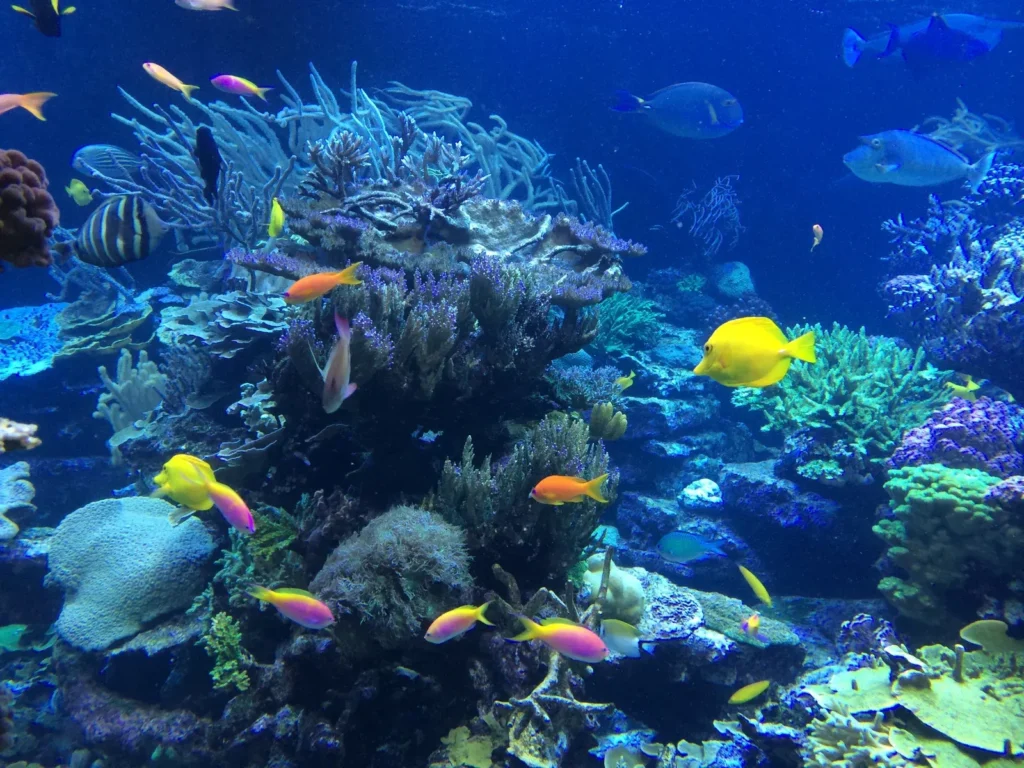
Staying within your limits of air consumption and bottom time is essential for safety. It ensures you have enough air to ascend safely and reduces the risk of decompression sickness. Adhering to these limits encourages better dive planning, enhances your diving skills, and decreases stress, leading to a more enjoyable experience.
Underwater Composition Tips to Make Every Shot Count
An important consideration when practicing underwater photography is composition. Given the time constraints and visibility, understanding these techniques ensures every frame counts:
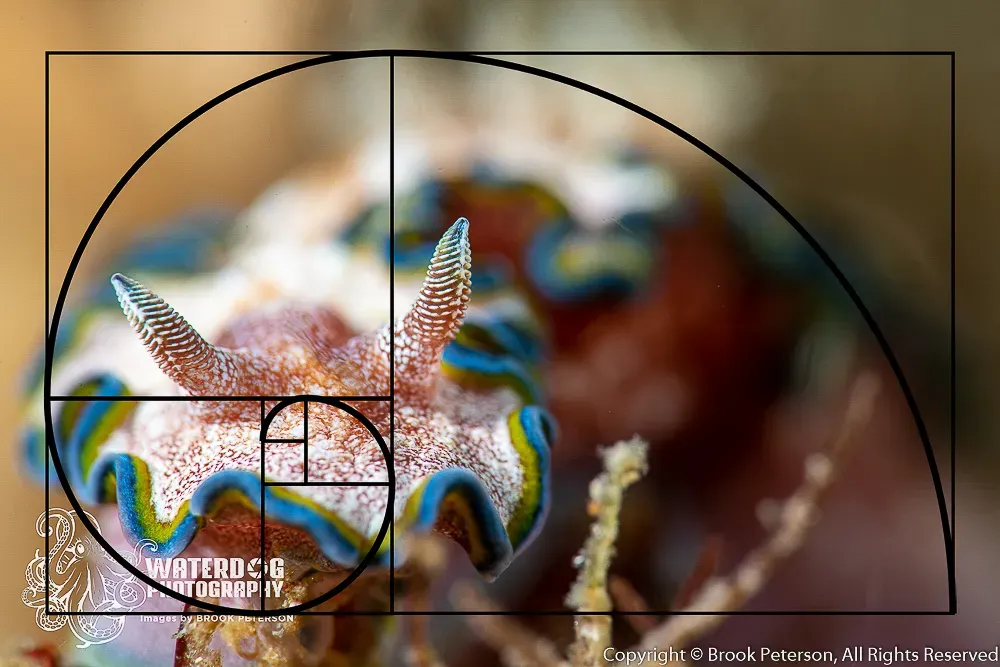
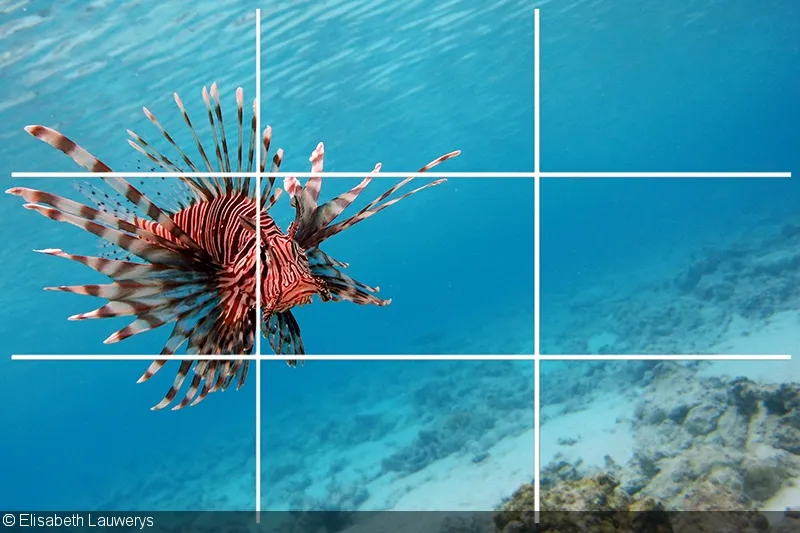
An important consideration when practicing underwater photography is composition. Given the time constraints and visibility, understanding these techniques ensures every frame counts:
Thirds Rule
Utilize two horizontal and two vertical lines to split your frame into nine equal parts. Have your subject positioned at one of the intersections to make the shot balanced and visually appealing.
Leading Lines
Direct the viewer’s gaze through your underwater shot using natural features such as coral and sunlight rays. These add dimension as well as intrigue.
Framing
Use branches of coral, stones, and other elements to frame your subject and provide an additional context, as well as a perception of scale.
Light Your Way Longer
Lighting techniques play a key role in enhancing underwater photography results.
Using Natural Light
While scuba diving, your guides will encourage you to take “shallow dips” of around 10 to 20 feet. These depths make use of sunlight, which at these times of the day is usually softer, especially in the mornings and mid-day.
Artificial Lighting and Strobe Use
When natural lighting is insufficient, strobes become helpful in illuminating the subject while bringing back the color depth of the scene. When positioned correctly, the strobe light will reduce harsh shadows and bring out finer details.
Preventing Backscatter
When tiny particles of water reflect your light towards the lens of your camera, backscatter occurs and can ruin your image. To minimize backscatter, set your strobes at an outward angle, away from the camera.
Bringing Images to Life the Easy Way with Post-Processing
No matter your shooting techniques, enhancing your images during post-processing will always keep you one step closer to your desired result. Here are ways to improve your underwater shots:
Color Adjusting
While going underwater, the depth filters out red and yellow colors. Software such as Adobe Lightroom or Photoshop can successfully restore these colors, brightening specific areas and creating vibrancy.
Enhancing Clarity
Clarification becomes easier when desaturation filters are added, helping define the blurry areas caused by shifting water.
Blurry regions often appear due to the unpredictable movement of water. With these filters, you can see the surrounding environment more clearly and accurately.
Trimming the Edges Without Losing Content
Instead of improving distractions in the frame, cropping changes the frame’s position whenever necessary. With cropping, you eliminate unwanted distractions while improving the overall framing of the image.
Locations for The Best Underwater Photography Safari
Not every site has the best conditions for underwater photography. Here are some of the best places in the world you need to check out:
- Australia’s Great Barrier Reef is famous for its extensive coral ecosystems, comprising the world’s largest coral reef system.
- Silfra in Iceland allows you to photograph and cherish the beauty of glacial and crystal-clear underwater seascapes.
- Raja Ampat in Indonesia is known for its extraordinary marine biodiversity.
- Blue Hole in Belize features enormous, catastrophic underwater structures.
Some Ethical Considerations
Be responsible underwater photographers by practicing good environmental habits. Respect for marine wildlife and their environments is part of the photography experience. Practicing eco-friendly habits will help protect the underwater environment you cherish:
- Don’t engage with marine animals or try to touch them.
Don’t engage with marine animals or try to touch them. Interacting with marine wildlife can cause stress to the animals and may disrupt their natural behaviors. Additionally, some marine animals may be dangerous or carry diseases that could pose risks to humans. It’s essential to appreciate them from a distance to ensure their safety and yours.
- Corals can take years to recover from even the slightest damage, so do not make contact with them.
Corals can take years to recover from even the slightest damage, so do not make contact with them. Avoid touching or stepping on corals, as even a light brush can harm their delicate structure. Instead, observe them from a distance or use flotation devices to stay above them while snorkeling or swimming. Additionally, be mindful of your gear to prevent accidental contact. Taking these precautions helps ensure the health and longevity of coral reefs.
- Leave a minimal ecological footprint by using eco-friendly coral equipment and sunscreen.
Using eco-friendly coral equipment and sunscreen is important because conventional products can harm marine ecosystems, particularly coral reefs. Many traditional sunscreens contain harmful chemicals like oxybenzone and octinoxate, which can cause coral bleaching and disrupt marine life. By choosing eco-friendly options, you help protect these vital ecosystems and promote a healthier ocean environment. Additionally, using sustainable equipment reduces waste and limits our impact on natural habitats, ensuring that they can thrive for future generations. Reducing your ecological footprint contributes to a more sustainable planet overall.
Find a New Underwater Perspective
Transforming underwater photography into art requires connecting with another world that lies out of reach. Make strides towards preserving extraordinary marine habitats by taking stunning oceanic landscape photos, focusing on rough water techniques, and ensuring you master the controlled buoyancy shot.
Once you are ready and willing to learn, be prepared to savor every moment while practicing composition in shallow water. Lastly, cherish every image because every shot taken reveals the enchantment the underwater world conceals from the eyes of many.
